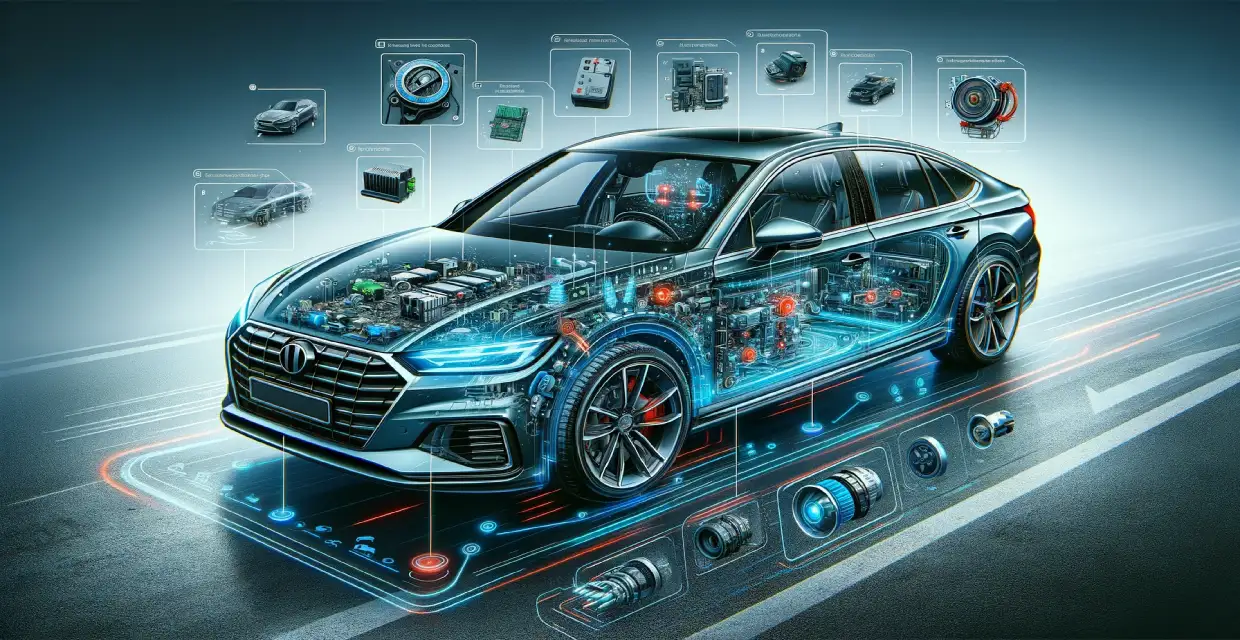

Cars these days always have a mention of ESC in their manuals and feature pamphlets. But what exactly is ESC? ESC or Electronic Stability Control is a key aspect of safety systems, which helps prevent the vehicle from losing control and skidding, especially when taking a turn, braking sharp or a sudden manoeuvre. It detects when the steering wheel loses control and automatically applies brakes to help the vehicle go in the intended direction. 80-90% of cars in Europe have been equipped with this technology. This article will help you explore the ESC in more detail and how it can enhance your driving experience.
While you drive, ESC keeps a check on your steering wheel and the direction of the vehicle. The Electronic Stability Control is programmed to compare the intended direction with the actual direction in which the vehicle is currently going. This employs the principles of lateral acceleration along with road wheel speeds and vehicle rotation measurement. ESC utilises sensors to monitor your vehicle's direction, steering wheel position, and tire brakes. When it detects a deviation from your intended direction, it intervenes, adjusting speed and selectively applying brakes to realign your car. Without ESC, depicted in the image, you risk veering off-road or encountering a collision.
Also Read:- Cars Under 20 Lakhs
Originating in the 1990s, ESC systems underwent significant enhancements, leveraging sensor technology and vehicle dynamics. It progressed from rudimentary anti-skid mechanisms to sophisticated algorithms, which are great at correcting skids and aiding control. When it was integrated with ABS and traction control, modern ESC systems provided various safety functions, offering enhanced stability and accident prevention.
Also Read:- Upcoming Cars in 2024
While ESC favours your driving, there are other benefits to it. For the very reason, it is being called a luxury marvel but a necessity when it comes to cars. Some of the benefits include:
ESC integration: Prevents accidents & collisions, crucial during sudden lane changes or evasive manoeuvres
Enhances driving dynamics: Improved handling & control, even in adverse conditions like off-roading
Major safety feature: Stands against accidents, elevating driving safety
Harmonises with driving dynamics: Ensures safer, controlled driving experiences
Transformative technology: Promotes overall road safety, benefiting motorists
Also Read:- Types of Car Chassis
ESC demonstrates commendable functionality across diverse weather conditions like rain, snow, or icy terrains. Its flexibility extends to various road surfaces, ensuring stability on gravel, pavement, and even off-road environments. In rain or snow, ESC dynamically adjusts, averting skids and ensuring better vehicle control. On different terrains, be it gravel or pavement, ESC orchestrates stability, preventing loss of control and enhancing overall safety. Its adaptability across varied driving conditions underscores its significance, offering consistent stability and control regardless of weather or road surfaces, making driving safer and more secure in multifarious scenarios.
Like 2 sides of the coin, Electronic Stability Control isn’t perfect and that’s a great achievement in itself. The better the thing is, more the criticism it gets. Listed below are some of the plus points and negatives about ESC.
Automated activation, applies brakes independently.
Prevents skidding, averting rollovers, and reducing severe accidents.
Assists in adverse conditions, correcting loss of control.
Ensures control in emergency manoeuvres, aiding steering and braking.
Limits faster cornering speeds, designed for controlled driving.
Unnecessary interference in aggressive driving or drifting.
May induce complacent driving behaviour, unable to aid at extreme limits.
Also Read:- Tips to Maintain Your Car During Winters
Misconceptions about ESC are common these days, leading to myths about its function. Addressing these misunderstandings is crucial. Some believe ESC makes cars immune to skidding or enables faster cornering, but it's primarily designed for stability, not invincibility. Debunking such myths is essential to grasp its actual role, ensuring people understand its limitations, promoting safer driving practices, and clarifying ESC's genuine contribution to vehicular safety. Educating individuals about ESC's capabilities and dispelling false beliefs aids in better comprehension and utilisation of this pivotal safety technology in automobiles.
Regulations surrounding ESC are pivotal in ensuring vehicle safety standards. Governments worldwide have imposed mandates requiring ESC in new vehicles. These regulations aim to enhance road safety and reduce accidents. Moreover, safety assessments often consider ESC technology, influencing vehicle ratings. These assessments gauge a car's safety attributes, including ESC effectiveness. Adhering to these standards and ratings underscores the significance of ESC in modern vehicles. Compliance with government mandates and safety evaluations emphasises the importance of this technology, elevating its role in ensuring safer driving experiences.
Also Read:- Drive Car in Heavy Fog
ESC is a pivotal safety innovation in vehicles which is redefining your driving experience, controlling skidding and aiding during emergencies. Even though there are myths regarding the same, it cannot be ignored that it is important to ensure safety. It is important to educate about ESC’s capabilities to the general public. In essence, ESC ensures safer roads, crucial in modern driving for secure driving experiences and safer roads.